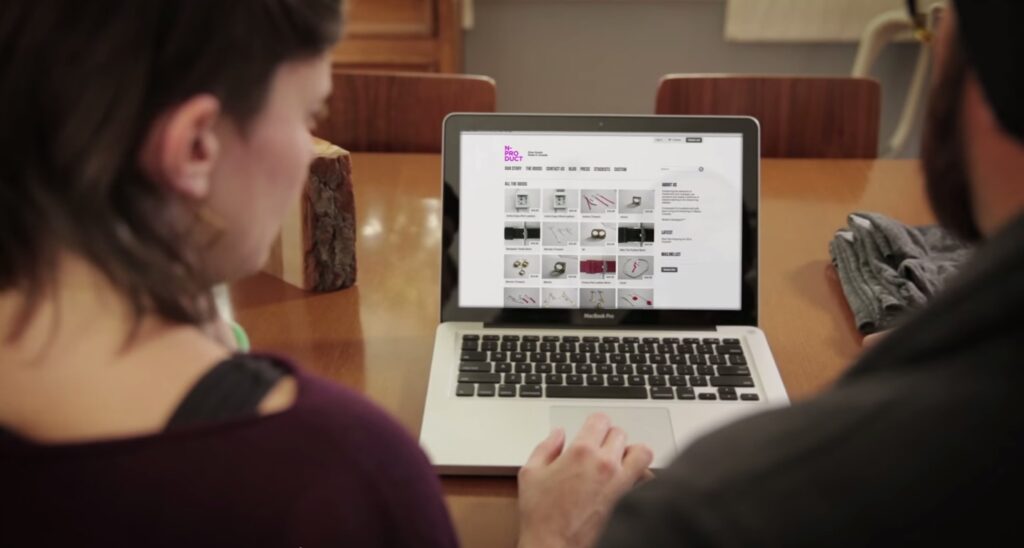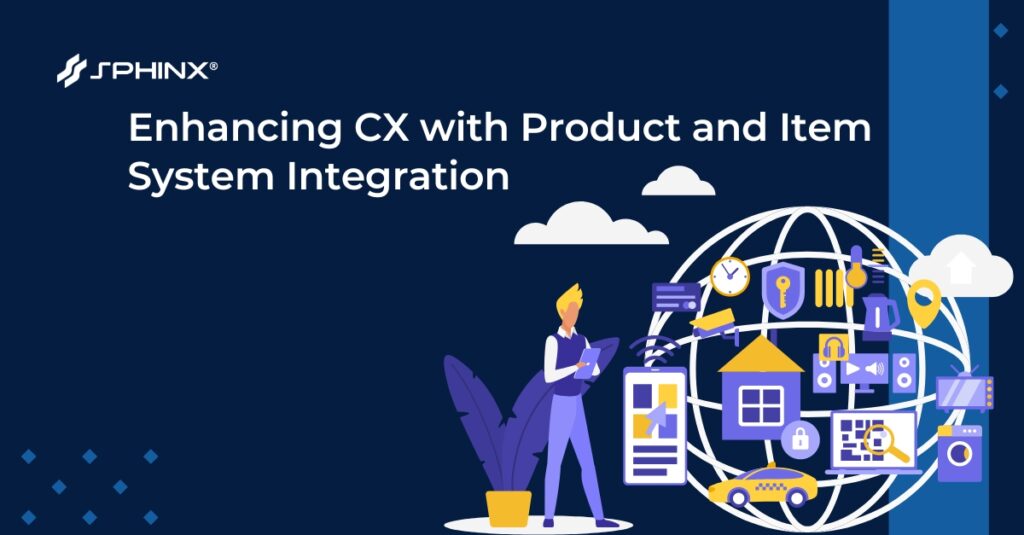For years, retailers have distinguished between managing products — broad categories like “men’s button-down shirts” — and items — specific versions of those products, such as “men’s white button-down shirts, size XL” — using separate systems. This separation was logical due to the distinct systems and processes each required. However, as the retail landscape evolves towards a more integrated, ‘omni-channel‘ experience where the boundaries between online and physical stores are fading, it’s becoming crucial for retailers to integrate their item and product information systems. This integration lays a solid groundwork for what is now known as omnichannel retail, aiming to engage customers through various touch-points seamlessly connected by data.
In this blog post, I’ll delve into the advantages of integrating product and item systems and offer guidance on how retailers can embark on this integration journey.

1. Advantages of integrating product and item systems
Integrating product and item systems lays a solid groundwork for retailers aiming to excel in an omnichannel environment — seamlessly connecting with customers whether they’re shopping in-store, online, via web or social media — and enhances collaboration across merchandising, marketing, and supply chain teams with suppliers and partners.
This integration establishes a unified source of truth, enriching it with data crucial to navigating a complex retail ecosystem. This foundational unity allows for enhanced quality control and content customization for potential customers, offering retailers greater product transparency and the ability to craft more captivating shopping experiences.
Three core benefits of a unified system include:
- Streamlined collaboration and Process automation: This system fosters seamless interaction and automation across operational and digital channels, facilitating the coordination of product attributes, descriptions, and categorizations. The result is a smoother customer journey, from initial search and discovery through to purchase and fulfillment.
- Enhanced cross-functional efficiency: By aligning various aspects of the value chain, retailers can operate more effectively, accelerating the delivery of value to customers.
- Simplified management of retail challenges: With a centralized system, issues like SKU rationalization, assortment planning, product lifecycle management, and launching new products become more manageable, eliminating the need to navigate multiple disparate systems.
Ultimately, this unified ecosystem not only simplifies internal processes but also significantly enhances the customer experience, positioning retailers to thrive in today’s dynamic market.
2. Implementing a unified ecosystem
Understanding the advantages of a unified product and item ecosystem is one thing; transitioning to such a system when accustomed to traditional methods poses its own set of challenges. Therefore, adopting a methodical and gradual approach is essential.
Here’s how to proceed:
- Phase 1: Establish consistency and efficiency:
Attempting to update fragmented, outdated systems — often a complex mesh of subsystems developed over many years — is a common misstep for retailers. The initial step should involve setting enterprise-wide standards to conceive new solutions that support your business’s growth.
This involves a three-part process:
- Pinpoint key categories for impact: Start by identifying categories most affected by the integration. For instance, you may collaborate with your frozen food suppliers, covering everything from item setup to product enhancement and delivery.
- Create a unified data framework: Develop a comprehensive data model that encompasses both item and product attributes.
- Implement a modern platform: Establish a new system equipped with workflow functions that can integrate with your current PIM (product information management) system. This platform can be custom-built or a pre-made solution acquired off the shelf.
- Phase 2: Streamline and improve:
The focus of this phase is to lessen your reliance on outdated legacy systems. Begin by devising a strategy to gradually detach from and eventually phase out these systems in favor of the newly established platform. Enhance this platform by incorporating advancements in data modeling, business logic, workflow improvements, and integrating new functionalities. These enhancements will lay the groundwork for supporting innovative growth strategies.
- Phase 3: Expand and consolidate:
With the new platform established, the next step involves its implementation across different categories and customer segments, tailoring enhancements to fit the prevailing market conditions.
Crucially, this stage allows for the centralized management of item and product information within this unified system. Determining dependencies will require careful consideration and alignment across the organization. Ultimately, consolidating functions into a singular, comprehensive system, rather than relying on several disparate applications, presents a more efficient and cost-effective approach, benefiting both time-to-market and overall operational coherence.
In essence, transitioning to a unified item and product ecosystem through these three phases offers a strategic pathway for retailers aiming to modernize and streamline their operations. Starting with standardizing processes, moving through rationalizing and enhancing existing systems, and finally scaling and unifying operations, each phase builds upon the last to create a robust, integrated platform. This phased approach not only minimizes dependency on outdated systems but also aligns with current market dynamics, optimizing cost and efficiency. Ultimately, this transformation lays the foundation for a more agile, responsive retail operation, poised for future growth and innovation.
3. Enhancing retail for businesses and consumers:
The distinction between items and products is becoming increasingly indistinct, driven by the rise of omnichannel fulfillment and the growing demand for transparency in business operations. Retailers are facing challenges in adapting their current item and product management systems to accommodate these new expectations. This adjustment is not merely a technical upgrade but an enterprise-wide endeavor that necessitates collaboration across various sectors of item and product management. The time is ripe for retailers to reassess their existing processes and strive for a cohesive, unified system that encompasses both item and product data, moving beyond isolated, system-level changes.
A practical initial step in this direction is to pinpoint areas within the omnichannel product landscape that will benefit most from integration, and then to develop a comprehensive platform that enhances workflow and involves all key participants, including business teams, suppliers, and merchandising operations.
Conclusion
The move towards a unified system for managing items and products marks a critical transformation within the retail sector. This integrated approach enables retailers to surpass the constraints of outdated systems, cater to the dynamic requirements of an omnichannel environment, and foster greater operational transparency. This evolution is about more than just upgrading technology; it’s a reevaluation of the processes through which retailers organize, manage, and disseminate product information. Initiating this transition, with a focus on collaboration and stakeholder involvement, paves the way for streamlined operations, enhanced customer satisfaction, and avenues for innovation. Embarking on the path to a cohesive, integrated ecosystem opens doors for retailers to better meet consumer and market expectations, signaling a new chapter in retail superiority. In navigating these waters, partnering with a knowledgeable ally like Sphinx can ensure a smooth and seamless journey towards achieving retail excellence.
Disclaimer: The statements and opinions expressed in this article are those of the author(s) and do not necessarily reflect the positions of Sphinx.
Find more information about Sphinx on:
Email: contact@sphinxjsc.com
LinkedIn: https://www.linkedin.com/company/sphinx-jsc/
Twitter: https://twitter.com/SphinX_jsc




CEO - Son Le
OTHER BLOGS
Blogs
7 Reasons Big Companies Invest in AI for Legal Operations
Artificial Intelligence (AI) is revolutionizing industries across the board, and the legal sector is no exception. Large corporations are increasingly integrating AI into their legal operations to enhance efficiency, reduce costs, and improve decision-making. However, what exactly is driving this surge in AI investment in the legal field? In this...
Read MoreBlogs
Generative AI in Manufacturing: Smart Automation for Production
The manufacturing industry is undergoing a major transformation, driven by advancements in artificial intelligence. Generative AI is at the forefront of this shift, revolutionizing production processes with intelligent automation. According to Gartner’s report, Generative AI has the potential to drive significant transformations in manufacturing by delivering advanced, data-driven insights and...
Read MoreBlogs
Generative AI in Healthcare: Revolutionizing the Future of Medicine
The rise of artificial intelligence (AI) has significantly impacted various industries, and healthcare is no exception. Among the latest advancements, Generative AI stands out as a groundbreaking technology with the potential to transform patient care, medical research, and clinical workflows. From generating medical images to assisting in drug discovery, Generative...
Read MoreOTHER BLOGS
Our Sevices
IoT Development
SphinX offers cutting-edge IoT development services, seamlessly connecting devices and providing innovative solutions for a...
Xem thêmOur Sevices
Blockchain Development
We are highly proficient in engineering reliable and secure blockchain technologies from the ground up,...
Xem thêmOur Sevices
ERP & CRM Development
ERP & CRM development services that you need! Streamline business processes and enhance organizational efficiency....
Xem thêmOTHER BLOGS
Our Sevices
IoT Development
SphinX offers cutting-edge IoT development services, seamlessly connecting devices and providing innovative solutions for a...
Xem thêmOur Sevices
Blockchain Development
We are highly proficient in engineering reliable and secure blockchain technologies from the ground up,...
Xem thêmOur Sevices
ERP & CRM Development
ERP & CRM development services that you need! Streamline business processes and enhance organizational efficiency....
Xem thêm